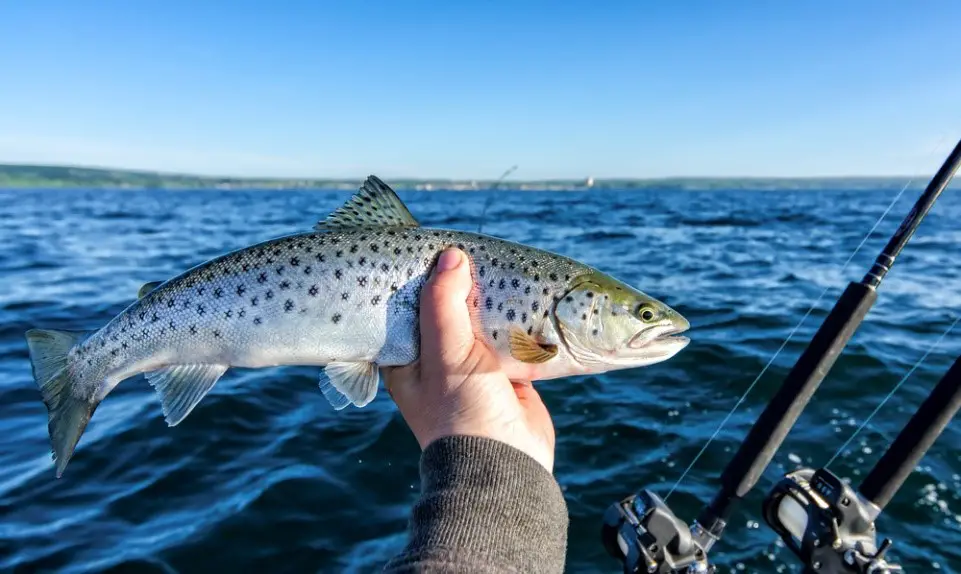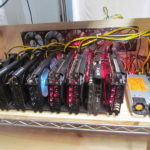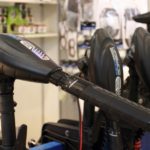Trolling motors can mean the difference between a bad day on the lake a good day on the lake. Trolling motors are more than just an accessory to get you from point A to point B. They can be the next best thing after your favorite fishing tackle when you get on the water.
Trolling for fish is a great way to go where the fish are. However, fish are often on the move, especially if they are looking for food or spawning. Therefore, they will go to various locations you may not be able to reach unless you have a boat, and lake trout are no different.
Note: most links in this article are Amazon.com Affiliate links, see Affiliate Disclosure, thank you.
What Are Lake Trout?
To troll for lake trout, you have to understand lake trout fishing.
Lake trout are char that get their name from the deep lakes that they enjoy living in. When they’re not looking for food sources or spawning, they find refuge in deep water. They will move to shallow water to look for food or spawn, so you’ll want to troll these areas if you’ve seen lake trout on the move on your fish finder.
Lake trout spawn in fall, so you will commonly see them in shallow water during this time. That’s not to say that lake trout won’t navigate shallow waters when feeding on insects, worms, and other small bait fish. That’s why many fishermen use flies when fishing for trout; however, any insect or worm is a great bait to use when trolling for lake trout.
When and Where to Troll for Lake Trout
Spring and fall are when lake trout are the most active in shallow water. Lake trout spawn in fall in water depth that is 15 feet or less. When they’re not spawning or feeding, lake trout will move to deep water with coverage. They don’t like to stay in open water, even though they have relatively good eyesight.
The coverage helps give lake trout a sense of protection when they have moved to deep water. Lake trout avoid bright lights and prefer dark conditions. Trolling for lake trout will help you access the lake trout that have moved to deep or covered water for the day, especially if you are fishing during bright conditions or in the middle of the day.
In summer, you’ll likely need to troll for lake trout in deeper water. Lake trout don’t school, but they share the same habitat. Where one lake trout is, there will likely be more lake trout.
A Step by Step Guide on How to Troll for Lake Trout

Before you head to the lake for some trout fishing, make sure you’ve got your boat loaded with everything you’ll need for the day. This includes charged trolling motor batteries, various tackle, and rod holders.
Lake trout eat insects, worms, and small baitfish, so your tackle should include a variety of these. Flies are a great option for lake trout, so you’ll likely want to include one fly rod on your boat. Spinnerbaits, lake trolls, crankbaits, plastic worms, spoons, and live worms are other great options you should include in your tackle when trolling for lake trout.
Step One: Measure the Water Depth
While lake trout are more active during spring and fall, they will return to deep water with coverage to feel protected. Because of this, you’ll need to know how deep the lake trout are staying as you are trout trolling.
With the right fish finder, you can track numerous locations and store them within the fish finder. You can do this the entire season or even the day before you go out onto the water to troll for lake trout.
Measuring the water depth will give you an idea of how deep lake trout are staying so that you know how much line to cast when you troll.
Step Two: Rig Your Lines
You can rig one line or multiple lines when you are lake trout fishing.
We recommend rigging at least three poles so that you triple your chances of throwing bait that big fish will strike.
Lake trout have relatively good eyesight, so bright colors aren’t always the best choice, especially for mature lake trout. Juvenile lake trout are attracted to bright colors and will typically strike them more often than mature lake trout. You should only consider trolling brightly colored crankbait or spinnerbait on cloudy days where visibility is limited. On bright sunny days consider using brass or gold flashers and black or dull-colored lures, like a black rooster tail.
Once you’ve cast your lines out, place your rods in their respective rod holders so that you don’t have to hold them the entire time you are trout trolling.
Here is a video explaining rigging for lake trout and rainbow trout.
Step Three: Start Trolling for Trophy Lake Trout
Now that you’ve rigged your lines and you know how deep you need to fish, it’s time to start trolling.
You should only troll between .8 mph and 1.1 mph unless you are trolling a lake that has a strong current. The faster you troll, the higher your line will sit in the water, so you’ll need to account for the speed you’re trolling and the weight of the rig to determine how deep your bait will sink. You’ll want to make sure your bait is deep enough that it is reaching big lake trout that has settled deep in the water, in which case you should add more weight.
If it is early morning or late evening in spring or fall, you’ll likely troll for big lake trout in shallower water, so keep this in mind when you’re casting your line.
Step Four: Watch Your Rods
You can easily cast another line to target other fish while you’re trolling for lake trout. Just don’t forget to watch your rods to see if they’re getting a bite. You’ll start to notice the rods bending when a fish has hooked itself.
Grab the rod from the rod holder and start to reel. If you feel a fish, then safely land it on the boat! We recommend keeping a net on your boat so that you don’t run the risk of losing your lake trout as you pull it up on the boat.
Lake trout don’t school, but if you catch one, there’s likely more where that came from!



